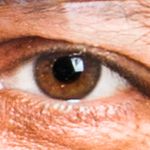Bitmap vs. Greyscale [was Edit .TIFF image?]
Copy link to clipboard
Copied
Hello there. I'm kinda new with Photoshop and I've never touched a .tiff file before.
I have some editorial .tiff comic images I have to clean, they're meant to be printed. I have to clean the dialogues and fix some crooked lines.
The instructions they gave me are:
- Never convert bitmap to grayscale.
- To work outside the file, you have to select and copy the part you want to edit and paste it in a new grayscale file. Edit and do whatever you have to do in a new layer. Put the right STROKE, copy and paste in the original bitmap file. Invert the selection and patch minding the whole image.
I'm soo lost. How do I paste an edited part of the image to the original .tiff file? Because the .tiff file doesn't let me edit anything, like it's blocked? Do I have to change some settings??
There's some other way to attatch two different .tiff images into one?
In spanish:
[moderator changed subject to reflect correctly the question]
Explore related tutorials & articles
Copy link to clipboard
Copied
»Because the .tiff file doesn't let me edit anything, like it's blocked?«
You might be confusing two things.
• tif images can be edited just fine, they can even contain Layers if they are RGB, CMYK, Grayscale, …
• bitmap images (actually 1bit bitmap images) do not support a lot of features that work in other Color Modes.
So if you want to use Filters like Liquify, Layers, … you have to work at least in grayscale.
Could you please post screenshots taken at View > 100% and of the whole image with the pertinent Panels (Toolbar, Layers, Options Bar, …) visible?
Or the image itself?
Copy link to clipboard
Copied
Hi, thanks everyone for replying.
Here is a screenshot.
So what was I tying to do was select a panel of the manga, edit it in a new file in grayscale, and then paste it back to the original in bitmap, but as you said I can't paste and neither use layers.
Should I convert a copy of the original file to grayscale, edit it, and then againg to bitmap? Or is that going to affect the quality badly? The instructions clarify not to convert to grayscale but I'm unable to find another solution.
Copy link to clipboard
Copied
There's some other way to attatch two different .tiff images into one?
Holà!
Do you mean to open two images side by side? you can do that in the Windows>Arrange menu, or you need to "drag" the tab in order to get a floating document.
Copy link to clipboard
Copied
@sophiel21462049 wrote:
How do I paste an edited part of the image to the original .tiff file?
In addition to what has already been said, do not work on the original files. Make copies of everything so you can go back to the original if necessary.
~ Jane
Copy link to clipboard
Copied
The instructions you were given by them are nonsense.
You can totally work in greyscale and convert back to a bitmap at the end.
Open the bitmap, convert to greyscale, then save as a .psd file. This will be your working file. There is no need to work "outside" this file and paste.... Add a new layer and do your fixups/changes on that layer. (I assume you are just working with the line work, and not the "halftoned" areas). Once you've done your changes, convert to bitmap (flatten when asked) and use > 50% threshold. save as a new TIFF file (use LZW compression to reduce file size)
If something doesn't work right, you have your working psd file to go back to.
Copy link to clipboard
Copied
Of bigger concern to me is that your image sample looks like a scan from an existing printed product. If your client is the copyright holder, it's odd they do not have "original art" for you to work with. Just sayin'.
Copy link to clipboard
Copied
The instructions seem to forbid that you convert to greyscale and back - at least that's what they might seem to say.
The dot patten is a "halftone" and may have been carefully set up for the final print device, or for particular effects. If you convert to greyscale and back to bitmap this precision will be lost, and that might be why you are forbidden it. It means you have to work with the much more limited tools available in bitmap mode, if that's the case. It also means your work must be very strictly limited to what they said, and what you add needs to be pure black (or white), since you CANNOT add greys of any kind and match the existing work.
By the way, do you have a set of four similar TIFFs for each of the art pages? If so, you have colour separations. If so, you have an enormous technical challenge, as your changes must reflect a full knowledge of the colour separations and the final colour. The plates would probably be CMYK though in traditional comic book production they might be 2-colour or 3-colour. (There is a now lost traditional skill of a "colorist" in comic books, who takes black and white drawings, and hand draws colour separations of additional colour to fill in the colors between the lines, following agreed charts for character colour schemes).
Copy link to clipboard
Copied
"If you convert to greyscale and back to bitmap this precision will be lost"
Not for the existing scan.
The halftone in the OP's image is the actual coarse halftone on the printed item that was scanned. It's a bitmap and fixed. Converting those to greyscale does not change those objects at all, even when you convert back to bitmap, as long as everything stays 1 to 1 (i.e. no change in resolution, upsampling, etc).
Regardless, if the OP uses a new layer to do the changes (leaving the original bitmap layer alone completely), the only concern will be is how the new layer converts to bitmap. If they use hard-edged tools, like the pencil tool or a hard-edged paint brush, the conversion will go quite well.
Actually, it'd be prudent to use a couple of layers: one to use to paint OUT items (using white) would be helpful, and then layer(s) for the new black touch-ups on top.
My guess, the task at hand is not do do anything with the existing halftone screens at all, except for maybe touching up a couple of the missing dots.
They COULD paint in new areas of tone (on a new layer again to make it easier) in greyscale, then convert that to bitmap at the end, playing around with the halftone settings to match as close as possible the halftone screen value/angle of the existing scan (as well as adding a bit of noise to match the roughness of the existing dots).
Copy link to clipboard
Copied
»Converting those to greyscale does not change those objects at all, even when you convert back to bitmap, as long as everything stays 1 to 1«
One should take care not to introduce unintended dithering, screening, … when converting back to Bitmap.
Another approach to make sure one gets a reliable preview of the bitmap at View > 100% is using a Threshold Layer at the top of the Layer stack in the grayscale image.
That way even using soft brushes will not introduce pixels with values other than 0% and 100%.
Copy link to clipboard
Copied
Agreed about the dithering. Although, As long as one is careful, even adding tone can work and, in that event, actually ADDING some noise is helpful.
As I said, I would work with a few layers: At least one for Black changes, and one for White "whiteouts", and as many others as necessary. I did a test replacing an area of tone and it worked quite well. Since the orginal scan's halftone dots were quite ragged, it was necessary to add some noise to "roughen up" the dots to approximate the original, otherwise they'd be too "clean". (added as a filter to a Smart Object layer so it can be toggled)
I measured the line screen of the original and used that value in the Convert to Bitmap > Halftone* (instead of 50% threshold).
* yes, there is, of course, the option to make halftone dots as a filter (Pixelate > Color Halftone), but it works much differently, so the dots are too perfect, so I don't recommend that approach.
Copy link to clipboard
Copied
(The one caveat to this is that PS will create the halftone dots where it wants to, and even if you can figure out a match for the line screen value and angle, the dots will more than likely not align, so it's best to "hide" that with defined outlines)
Again, this may all be moot if the OP's task is just to touch up outlines, but it's a fun thing to figure out (can you tell I have too much time on my hands?)
Copy link to clipboard
Copied
The issue is not editing Tiff file, but bitmap vs greyscale.
With bitmap one point is either black or white. With greyscale a point may have any value between 0 and max (max=255 in in 8 bit; max=65.535 in 16 bit).
There is no problem to convert from bitmap to greyscale, but there is a problem when converting the other way. That needs to be done correctly.











